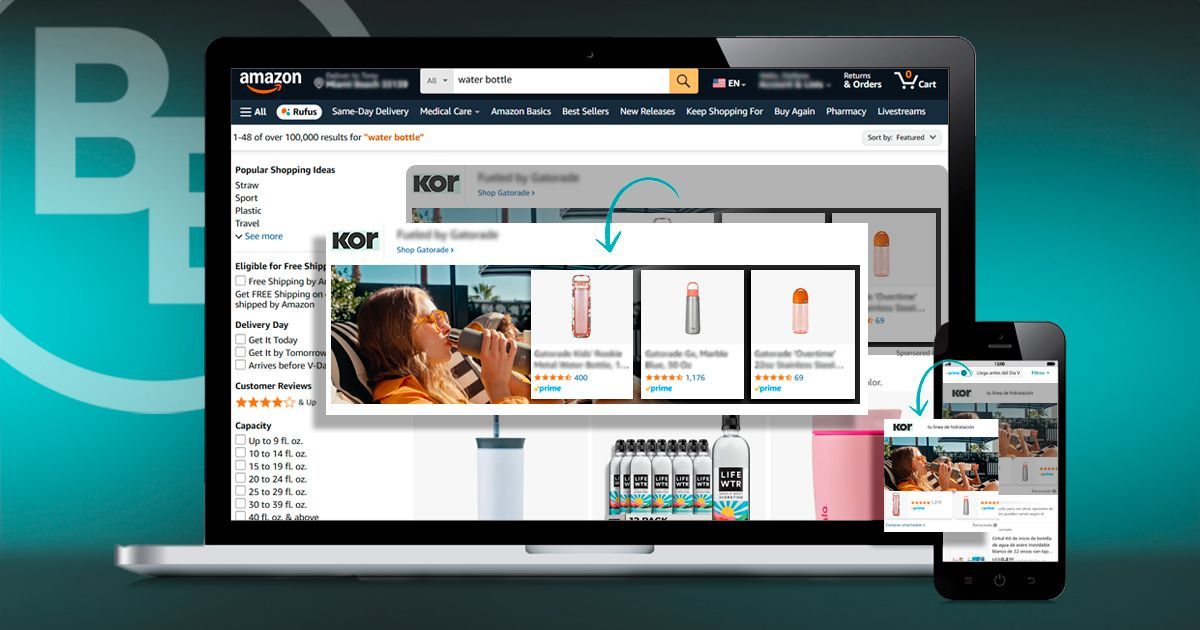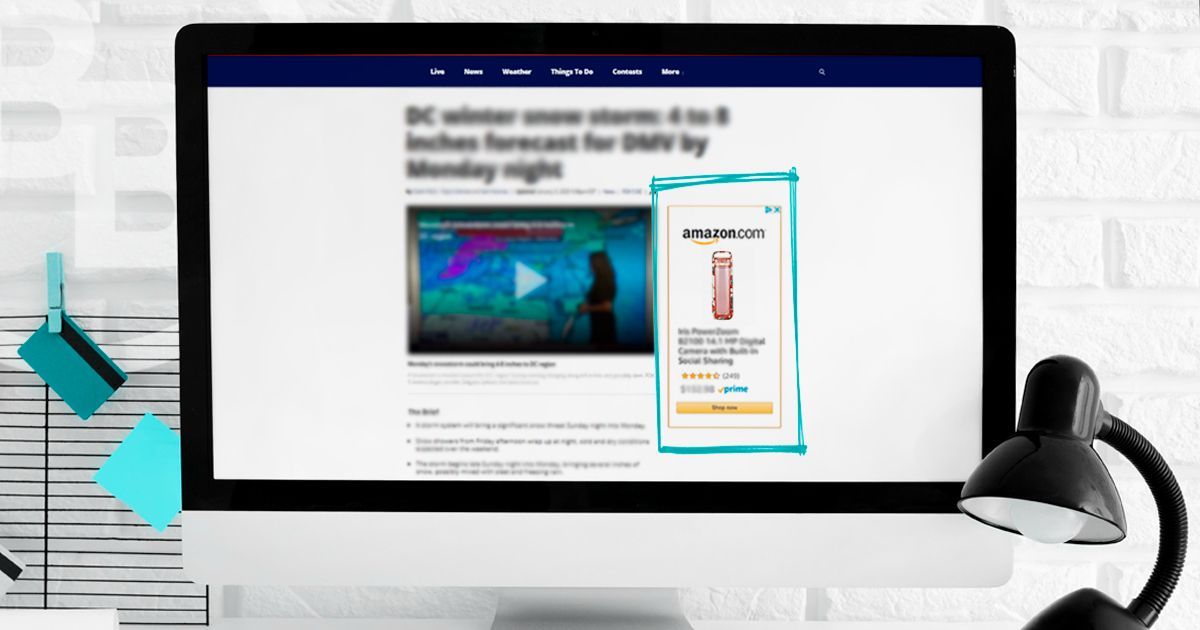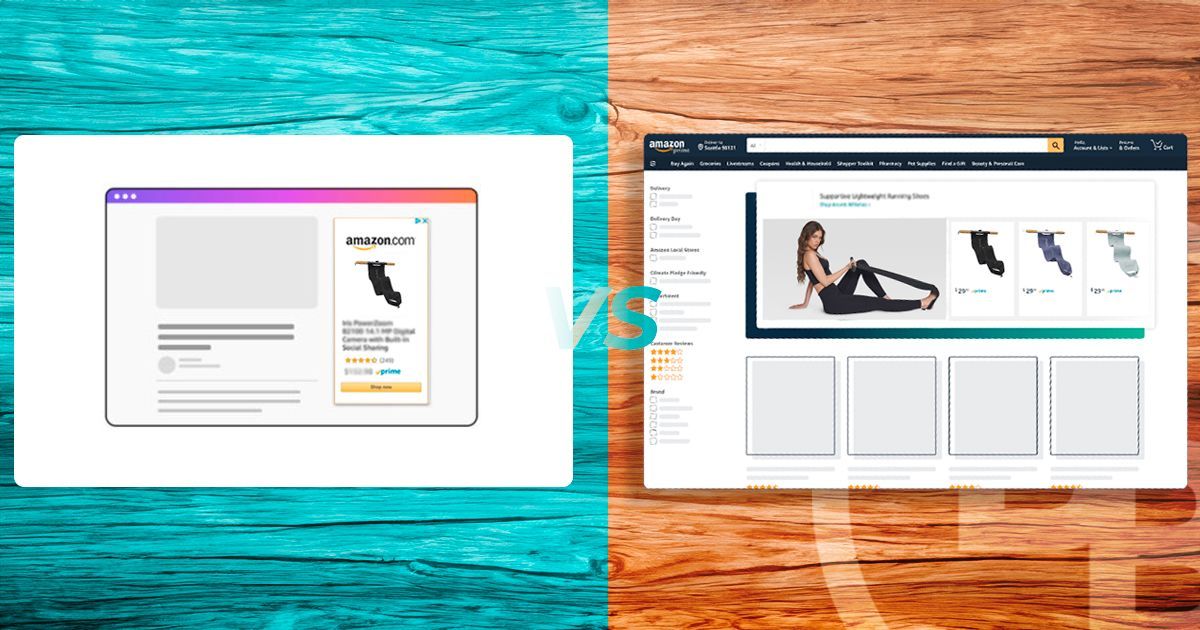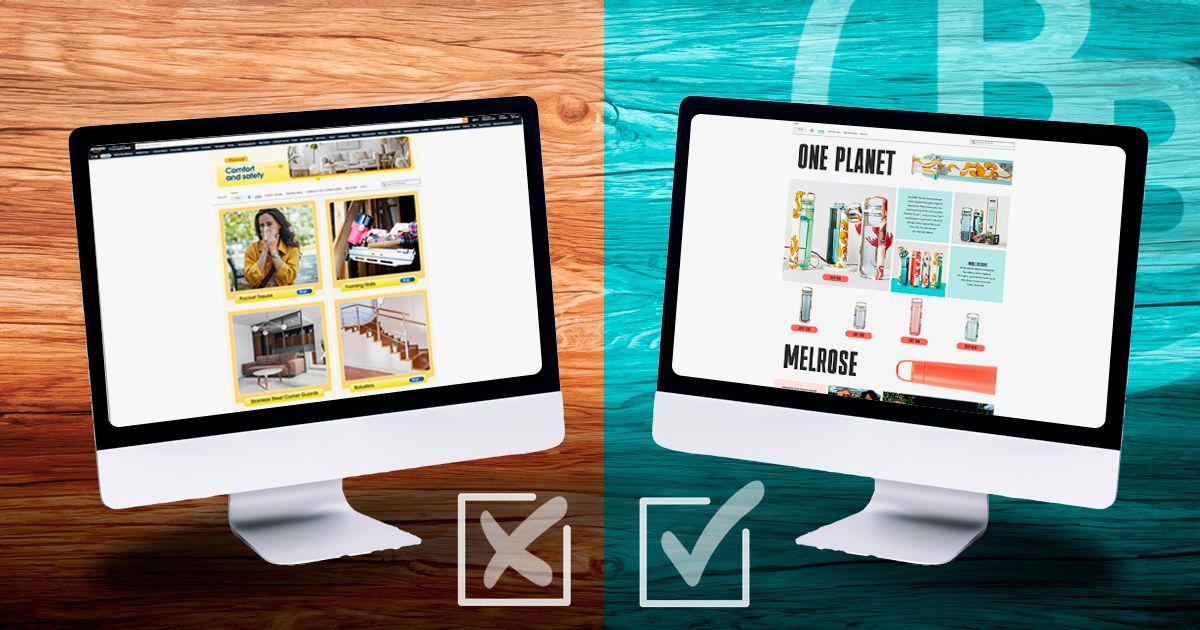Different Ad Types That Drive Traffic to Amazon Storefronts
This is Part 2 of a three-part series:
In our previous discussion, we explored "The Role of Amazon Brand Store in Creating First Impressions and Improving Customer Engagement." Now, in this second installment of our three-part series, we will delve into "Different Ad Types That Drive
Traffic to Amazon Storefronts."
Table of Contents
- Introduction
- Why Driving Traffic to Your Amazon Storefront Matters
- Overview of Amazon Ad Types
- How Each Ad Type Works to Increase Storefront Traffic
- Sponsored Products
- Sponsored Brands
- Sponsored Display
- Amazon DSP (Demand-Side Platform)
- Boosting Sponsored Brand Ads with Posts
- Utilizing Source Tags for Campaign Tracking
- Understanding Traffic Sources with Stores Insights
- Landing Page Optimization for Ad Success
- Actionable Takeaways to Maximize Traffic and Conversions
- Conclusion
Introduction
In today’s competitive landscape, attracting the right customers to your Amazon Storefront is critical for brand visibility and sales. Unlike traditional product listings, storefronts allow sellers to create a fully branded shopping experience, showcasing multiple products in an engaging format. However, simply having a storefront isn’t enough—you need to leverage the host of available Amazon ad types to drive relevant traffic and maximize conversions.
In this guide, we’ll explain the different Amazon ad types, explaining how each one works, its benefits, and how you can use it effectively to boost traffic to your storefront. We’ll also cover landing page optimization strategies to ensure that your ads lead to higher engagement and conversions.
Why Driving Traffic to Your
Amazon Storefront Matters
Amazon storefronts serve as dedicated brand hubs, offering shoppers a more immersive shopping experience. Here’s why focusing on traffic generation is essential:
- No
Competitor Ads: When shoppers browse your Amazon Storefront, they won’t see competitor-sponsored ads, ensuring their attention stays on your brand and products. This exclusivity significantly increases the chances of conversion.
- Enhanced
Brand Visibility: Unlike single product listings, storefronts allow you to highlight your full catalog and unique selling points.
- Higher
Conversion Rates: Customers engaging with a branded storefront are more likely to trust the brand and make a purchase.
- Stronger
Customer Retention: Storefronts create a seamless shopping experience that encourages repeat purchases and brand loyalty.
To leverage these benefits, let’s explore how different ad types can help drive traffic directly to your Amazon Storefront.
Overview of
Amazon Ad Types
Amazon provides sellers with several advertising solutions, each tailored to different marketing goals. Below are the primary ad types used to drive traffic to storefronts:
- Sponsored
Products –
Pay-per-click (PPC) ads promoting individual products. These ads appear in search results and on product pages, making them an effective way to capture high-intent shoppers. They are particularly useful for new product launches and seasonal promotions, helping drive immediate visibility and sales.
- Sponsored
Brands –
Ads featuring brand logos, headlines, and multiple products, directing traffic to a storefront. These ads appear in prominent placements, including the top of search results, enhancing brand visibility. They are particularly effective for driving awareness of new product lines and reinforcing brand messaging.
- Sponsored
Display
– Display ads targeting specific audiences both on and off Amazon. These ads utilize audience insights to retarget shoppers who have viewed similar products or engaged with a brand before. Sponsored Display ads help maintain visibility and encourage potential customers to complete their purchase.
- Amazon DSP (Demand-Side Platform) –
Programmatic advertising for advanced audience targeting. This solution enables brands to reach high-intent shoppers across Amazon-owned sites and third-party publishers. With detailed audience segmentation, DSP allows for more precise ad delivery, increasing the likelihood of conversions.
Each of these plays a distinct role in capturing shopper intent and guiding them toward your brand’s storefront.
How Each Ad Type Works
to Increase Storefront Traffic
- Sponsored
Products
- Best for individual product promotion.
- Targets high-intent shoppers searching for similar items.
- Ads appear in Amazon search results and product pages.
- Use
Case:
If a customer searches for "wireless earbuds," a Sponsored Product ad can increase the chances of your product appearing in prominent search result placements, but its positioning depends on bid competitiveness, keyword relevance, and other ranking factors. This boosts visibility and enhances the likelihood of a click-through to your storefront.
- Sponsored
Brands
- Helps build brand awareness with customizable headlines, logos, and multiple product placements.
- Directs shoppers to a landing page or directly to your Amazon Storefront.
- Use
Case:
A seller promoting a collection of eco-friendly kitchen products can use Sponsored Brands to showcase multiple items, increasing store visits and product awareness. Sponsored Brands ads appear in premium placements, such as the top of Amazon search results, helping brands drive traffic to a dedicated landing page or their Amazon Storefront.
- Sponsored
Display
- Targets specific customer interests and browsing behavior.
- Displays ads on Amazon, third-party sites, and apps.
- Use
Case: If a shopper browses similar items or engages with relevant product categories, a Sponsored Display ad can target them based on browsing behavior, increasing the chances of bringing them back to your storefront
- Amazon DSP (Demand-Side Platform)
- Uses advanced programmatic advertising to reach high-intent customers.
- Works across Amazon and third-party websites.
- Use
Case: If you want to target customers who previously searched for similar items but didn’t convert, DSP ads help re-engage them with dynamic product placements. For example, if a shopper browses premium running shoes but does not complete a purchase, DSP ads can later display relevant promotions for those shoes across Amazon and third-party sites based on their browsing behavior. Similarly, if a customer frequently views home decor items but hasn't made a purchase, DSP can retarget them with ads showcasing similar or complementary products, increasing the likelihood of conversion.
Boosting Sponsored Brand
Ads with Posts
Amazon Posts is a free feature that allows brands to create lifestyle-driven, image-based content that appears on product detail pages, storefronts, and category feeds. By integrating Sponsored Brands with Amazon Posts, sellers can enhance engagement and drive more organic traffic to their Amazon Storefront.
How
It Works:
- Posts appear on product detail pages, category feeds, and brand storefronts, allowing shoppers to explore more about a brand’s identity and offerings.
- They feature clickable images, enabling customers to navigate to related products or directly to the storefront.
- When combined with
Sponsored Brands, Posts can reinforce a brand’s messaging, increasing product discovery and shopper retention.
Example
Use Case:
A fitness brand running
Sponsored Brands for a new collection of yoga mats can simultaneously use Amazon Posts to share engaging content—such as workout tips or behind-the-scenes product development stories. When customers see these posts, they are more likely to explore the brand further, increasing store visits and conversions.
Utilizing Source Tags
for Campaign Tracking
To measure the effectiveness of your ad campaigns in driving traffic to your Amazon Storefront, leveraging Source Tags is essential. Source Tags are tracking parameters added to Amazon URLs to identify which marketing channels or campaigns drive the most visits and conversions. Without these tags, all the traffic you bring to Amazon is de-facto “blind”. In fact, without being able to really allocate the origin of your success, you are also absolutely unable to optimize your efforts.
Why It’s Important:
Helps sellers determine which advertising efforts are generating the highest ROI.
Allows for more accurate attribution of traffic sources, such as Sponsored Brands, Sponsored Display, external social media ads, or influencer marketing.
Enables data-driven decisions to optimize ad spend and refine marketing strategies.
Something To Remember:
As of now, Amazon doesn’t allow you to install Google’s tags or Meta’s pixels on their landing pages. This means that learning how to leverage Source Tags is really the best way for you to expand your reach beyond Amazon and hit the jackpot. Furthermore, Amazon’s own algorithm loves external traffic. Years of studies have shown that brands that are capable of producing a strong “outside-in” traffic rank better than those who only live and breathe on Amazon.
Example Use Case:
An electronics brand running Sponsored Display and external social media ads wants to track which source is driving the most conversions. By applying unique Source Tags to each campaign, they can analyze Amazon’s attribution reports to determine if their Sponsored Display ads are more effective than social media campaigns.
By utilizing Source Tags effectively, brands can continuously optimize their advertising strategies and ensure maximum return on ad spend.
Understanding Traffic Sources with Stores Insights
Amazon Stores Insights provides valuable data on where your traffic is coming from, helping sellers understand customer behavior and refine their ad strategies. By leveraging these insights, brands can make informed decisions on which marketing efforts yield the highest ROI and adjust their strategies accordingly.
Key Metrics to Analyze:
- Traffic
Sources: Identify whether visitors come from Amazon search, external social media ads, email campaigns, or other marketing efforts.
- Page Views & Click-Through Rates (CTR):
Track engagement levels and identify which pages are most visited.
- Sales
Attribution:
Understand how different traffic sources contribute to actual purchases. Drive external traffic via Amazon Attribution links to qualify for the Brand Referral Bonus. This can help reduce referral fees by earning an average bonus of 10% of the sales price, thereby improving overall profitability.
How to Use Store
Insights Effectively:
- Refine
Advertising Strategies: If a large portion of traffic comes from Sponsored Brands, invest more in those campaigns to maximize conversions.
- Optimize External
Traffic Sources:
If external campaigns (e.g., social media or influencer collaborations) generate strong traffic but low conversions, consider adjusting landing pages to improve engagement.
- Enhance Product
Listings & Storefront Pages:
If certain product pages receive more visits but fewer conversions, optimize images, descriptions, and CTAs to boost sales.
Example Use Case:
A fashion brand notices that its Amazon Storefront receives high traffic from social media ads but has a lower conversion rate. By adjusting product descriptions, adding video content, and refining CTAs, they improve conversions by 20%.
By utilizing Stores Insights, sellers can make data-driven decisions that enhance traffic quality and ultimately improve sales performance.
Landing Page
Optimization for Ad Success
A well-designed
landing page enhances the effectiveness of your ad campaigns.
Here’s how to optimize it:
- Ensure
Brand Consistency: Maintain consistent visuals, colors, and messaging across ads and storefronts. A cohesive look reassures customers and strengthens brand identity. For example, brands like Nike and Apple maintain uniform fonts, imagery, and color schemes across all their Amazon ads and storefronts, making them instantly recognizable.
- Highlight
Best-Sellers: Feature high-performing products to maximize conversions. Showcasing top-rated or best-selling items builds trust and increases sales potential. For example, if a kitchenware brand has a best-selling knife set, featuring it prominently on the storefront and ads can encourage more purchases.
- Use High-Quality
Visuals & Videos: Engaging content improves customer interaction and trust. High-resolution images, lifestyle shots, and product demo videos create an immersive shopping experience. For instance, a beauty brand might include tutorial videos showcasing different ways to use a skincare product, increasing customer confidence in their purchase.
- Incorporate Clear
Call-to-Action (CTA): Guide customers with strong CTAs like "Shop Now," "Follow Us," or "Discover More." A well-placed CTA encourages immediate action, improving conversion rates. For example, a home decor brand might use a CTA like "Transform Your Space – Shop Now" to entice customers to explore their offerings.
Actionable Takeaways to Maximize
Traffic and Conversions
- Diversify Your
Ad Strategy: Use a mix of Sponsored Brands, Sponsored Products, and Sponsored Display to maximize exposure and drive targeted traffic. Each ad type plays a crucial role: Sponsored Products capture customers actively searching for specific products, Sponsored Brands help build brand awareness by showcasing multiple products in a single ad, and Sponsored Display retargets shoppers who previously engaged with similar products. For instance, a seller launching a new skincare collection can use Sponsored Brands to display multiple items in a single ad, while Sponsored Display helps retarget those who viewed but didn’t purchase.
- Leverage Amazon
Store Insights: Use storefront analytics to track traffic sources, shopper behavior, and ad performance. Amazon provides valuable data on click-through rates (CTR), conversion rates, and customer engagement patterns. By analyzing these insights, sellers can optimize their landing page structure, improve product placements, and refine ad targeting. For example, if analytics show that most storefront traffic comes from mobile devices, prioritizing a mobile-optimized layout can enhance engagement and conversions.
- Retarget Non-Converting Shoppers: Utilize Sponsored Display and Amazon DSP to re-engage potential customers who browsed your products but didn’t purchase. Sponsored Display allows sellers to retarget users on and off Amazon, displaying ads to those who previously viewed their product listings. Meanwhile, Amazon DSP offers advanced programmatic advertising that reaches shoppers across Amazon-owned and third-party sites. For instance, if a customer checks out a premium coffee machine but doesn’t purchase, Amazon DSP can serve personalized ads showcasing the coffee machine alongside a limited-time discount or bundle deal, increasing the likelihood of conversion.
Conclusion
Successfully driving traffic to your Amazon Storefront requires a well-rounded approach that combines Amazon ad types, strategic content placement, and continuous optimization. Whether utilizing Sponsored Brands to build brand awareness, Sponsored Display to retarget shoppers, or leveraging Amazon DSP for broader audience reach, sellers must tailor their strategy to align with their goals.
Beyond ads, ensuring that your landing pages are optimized with compelling visuals, clear CTAs, and engaging product descriptions plays a crucial role in converting traffic into loyal customers. Additionally, using tools like Store Insights and Source Tags allows for data-driven decision-making, helping brands refine their campaigns for maximum efficiency.
By continuously evaluating and adapting to performance metrics, sellers can establish a competitive edge in the ever-evolving Amazon marketplace.
Stay tuned for the final part of our series, where we explore "Amazon Storefront Metrics and
How We Can Use Those Data for Conversion."
Recent Blogs
By asteele
•
July 18, 2025
Discover smart pricing and promotional tactics for Amazon Sellers. Learn how to boost conversions, increase AOV, and stay competitive while protecting profits.
By asteele
•
June 23, 2025
Amazon Marketing Programs: Unlocking Sales Growth and Customer Engagement
By asteele
•
April 28, 2025
Discover actionable strategies to captivate shoppers on Amazon. This guide explains how to use high-quality images, compelling titles, and A/B testing to boost click-through rates and drive sales.
Show More





